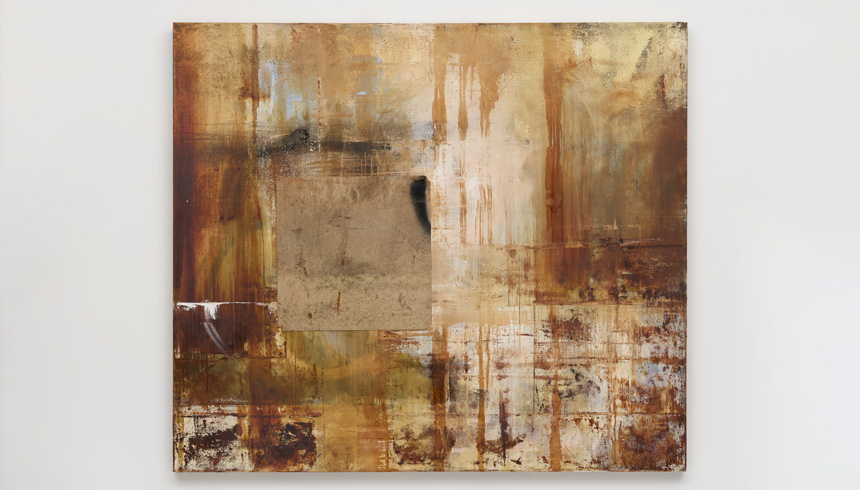East West Lifestyle
How to Invest in Art

Two experts tell us it's open for everyone, once you find your passion — and your budget.
As Reach Further reported earlier this year, art offers us a certain refuge in an uncertain world. And one way that art provides such reassurance is through its value — not just as a creative expression but, also, as a tangible hard asset.
Indeed, 150 paintings owned by the late Microsoft co-founder, Paul Allen, are expected to bring in around $1 billion in one single auction next month — a staggering number that was unimaginable twenty years ago.
It's a phenomenon that's moved into clearer focus more recently, says art-as-an-asset expert John Auerbach, CEO of UOVO, a premier provider of fine art and collections storage and services. "Since 1995, contemporary art has appreciated faster than the S&P 500 stock market index, where you're looking at a 14 percent annual return [for art] versus 10 percent for the S&P's total return."
On a $1 million sculpture, that four percent difference adds up to $40,000 — a handy sum, even for those who shop in the art market's rarified upper regions.
So, you might ask: how do I even get started?
"There's no one prescribed way to do this," Auerbach reassures.
"People just simply start looking," adds Art-Bureau principal Ed Tang, who joined the conversation with Auerbach and Agnes Lew, East West Bank's Senior Vice President and Head of Private Banking. "They start visiting museums. They might read art magazines. They might bring friends or go on dates at galleries. And that slowly evolves and can turn an interest into a real passion."
But as vanished fads like Beanie Babies, MySpace and fidget spinners remind us, what one of us finds valuable doesn't mean everyone else does — or will in the future. Tang recognizes this, saying that "there's a difference between being an art collector and being an art buyer," and each of us needs to consider what our goal is before going into any potential purchase.
"It's important to keep in mind when collecting art that you really should love what you're buying," Auerbach counsels. "Everything that we buy we love and want to live with."
The next question is one that applies across every potential asset class, from cars to homes to even a rare Rembrandt: what does it cost?
"It used to be that it was very hard to figure out what something's worth and how much it might trade for," Auerbach says. "Now all of that data is readily available online and for free, and even artificial intelligence algorithms that help predict the value of a work," a development that helped open the door to art investing for people around the world. "It helps make things less" intimidating, he says, for newcomers to the art world — including in Asia, where new collectors have "a voracious appetite for buying and selling."
But what if all this new transparency also makes clear that what you like isn't what you can afford? Well, there are even new ways to buy a painting — or, at least, part of one.
"There's fractional ownership of art now through companies like Masterworks or Minta," Auerbach says, "and there are art funds" that own works on behalf of dozens, hundreds or even thousands of small investors. "There are lots of ways to get involved in art and collectibles as an asset."
Another thing to consider is learning about what you don't know — including art, artists and cultures from parts of the world outside your own.
Fortunately, there's an app for that.
"Instagram has become the world's largest art gallery," Auerbach says. "A lot of the initial discovery, in addition to museums and galleries, now comes from Instagram and other social media sources."
Both experts acknowledged the notion that art collecting can still look strange or intimidating to outsiders. But Tang is ready to reassure those who might like window-shopping but wouldn't dare step inside to ask how much something costs.
"Anyone can walk in, look and ask questions," he says. "And by just looking and experiencing it for yourself, you'll find the confidence to ask the questions."
"I'm a big believer that if you don't ask," he adds with a laugh, "you don't get."
Once you've figured out what kind of art you like, a particular artist you love, and how much you can afford, there's a benefit to asking for someone else's opinion — especially an informed person outside your comfort zone of family and friends.
"Doing your homework ahead of time is important, just like it is for any investment," Tang says. "And an advisor can help by pushing your boundaries, opening up your horizons, being a sounding-board — and even protecting you from" buying a work of art that might not be as sound an investment as you might think it is.
"Advisors can help keep you from buying the wrong thing for a big price," he says.
And after you've made the bid, won the auction and gotten your dream piece home, art's benefits as an asset class continue to expand.
Today, art with a known provenance and agreed-upon value "can be used as collateral," Auerbach says. "You generally get a 50 percent loan-to-value ratio. It's something that many large collectors do, because then they can reinvest those funds in more art or in other assets. It's an efficient use of capital."
The door to investing in art today is open to everyone, whether you live in a gallery-packed city or a remote town where your phone is your guide. Are you ready to step through and start exploring?
Subscribe to the Reach Further Newsletter
Get inspiring stories in your inbox every month.

